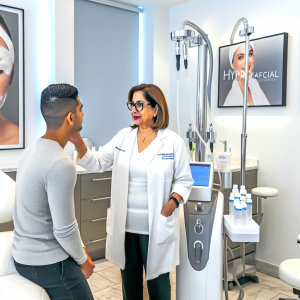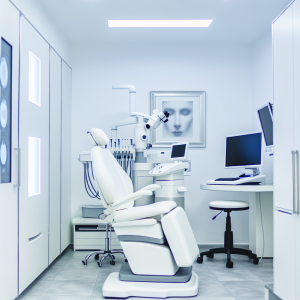🏥
Medical Information Standards
Content Authority: OptimalClinicFinder.com is a comprehensive medical directory platform connecting patients with qualified Botox providers. Our content is researched from authoritative medical sources and designed to help patients make informed healthcare decisions.
Understanding Botox and Fillers: Mechanisms and Clinical Applications
Botox (onabotulinumtoxinA) and dermal fillers represent two fundamental pillars of modern aesthetic medicine, each addressing different aspects of facial aging through distinct biological mechanisms. Botox works by temporarily blocking nerve signals to targeted facial muscles, preventing the repetitive contractions that create dynamic wrinkles around the eyes, forehead, and between the brows. This neuromodulator effect typically begins within 24-72 hours and reaches peak effectiveness at 10-14 days post-treatment.
Dermal fillers, primarily composed of hyaluronic acid, work through volume restoration and tissue support. These gel-like substances integrate with existing tissue to replace lost volume, smooth static wrinkles, and enhance facial contours. The hyaluronic acid attracts and binds water molecules, creating natural-looking volume that supports the skin’s structure. Different filler formulations are engineered for specific applications, from fine line correction to deep volume restoration.
💡
Did You Know?
Clinical studies show that Botox patients achieve excellent results when combined with professional-grade aftercare products.
Clinical Research and Treatment Outcomes
Extensive clinical research supports the safety and efficacy of both Botox and dermal fillers for aesthetic applications. Landmark studies have demonstrated that Botox consistently reduces wrinkle severity by 80-90% in treated areas, with patient satisfaction rates exceeding 95%. Long-term studies following patients for up to 5 years show sustained safety profiles and consistent treatment outcomes with regular maintenance.
Dermal filler research has evolved significantly with the development of cross-linked hyaluronic acid formulations. Clinical trials demonstrate that modern fillers can maintain 50-70% of initial correction at 12 months, with some formulations showing durability up to 18-24 months. Combination studies reveal that patients receiving both Botox and fillers achieve superior aesthetic outcomes compared to single-modality treatments, with enhanced patient satisfaction and longer intervals between touch-up procedures.
Treatment Protocols and Clinical Best Practices
Successful Botox and filler treatments require comprehensive patient assessment and individualized treatment planning. The consultation process includes facial analysis, skin quality evaluation, muscle movement assessment, and discussion of realistic treatment goals. Practitioners use standardized facial mapping techniques to identify optimal injection sites and determine appropriate product volumes.
For Botox treatments, standard protocols involve precise dosing based on muscle mass and desired outcomes. Typical doses range from 20-64 units for upper face treatment, with careful attention to injection depth and anatomical landmarks. The treatment is performed using fine needles with specific injection patterns designed to achieve natural-looking results while maintaining facial expression.
💡
Quick Tip
Botox works best when combined with healthy lifestyle choices for optimal results.
Filler treatments follow established protocols based on facial anatomy and product characteristics. Deep fillers are placed on bone or deep tissue planes for structural support, while superficial fillers address fine lines and skin quality. Advanced techniques such as microcannula placement and multi-plane injection allow for more precise product placement with reduced bruising and swelling.
Safety Considerations and Risk Management
Both Botox and dermal fillers have excellent safety profiles when administered by qualified practitioners following established protocols. Botox side effects are typically mild and temporary, including localized bruising, headache, or temporary asymmetry. Serious complications such as ptosis (eyelid drooping) occur in less than 1% of treatments and resolve within 2-3 months.
Dermal filler safety considerations include immediate reactions such as swelling, bruising, and tenderness, which typically resolve within 7-10 days. More serious complications such as vascular occlusion are rare but require immediate recognition and treatment. The availability of hyaluronidase as a reversal agent for hyaluronic acid fillers provides an important safety net for managing complications.
Patient selection plays a crucial role in treatment safety. Contraindications include active skin infections, certain autoimmune conditions, pregnancy, and unrealistic expectations. Thorough medical history review and informed consent processes ensure patients understand both benefits and risks of treatment.
Cost Analysis and Treatment Investment
The investment in Botox and filler treatments varies significantly based on geographic location, provider expertise, and treatment complexity. Botox pricing typically ranges from $10-20 per unit, with most patients requiring 20-60 units for comprehensive upper face treatment. Annual maintenance costs generally range from $1,200-2,400 for regular Botox treatments.
✓
Why Choose Botox?
●
Clinically proven
●
FDA approved
●
Minimal downtime
●
Long-lasting
Dermal filler costs depend on product type and volume required, typically ranging from $600-1,200 per syringe. Most patients require 1-3 syringes for comprehensive treatment, with touch-up sessions needed every 12-18 months. The total annual investment for combined treatments often ranges from $2,000-4,000, depending on individual needs and treatment goals.
When evaluating costs, patients should consider the expertise and qualifications of their provider, as well as the quality of products used. While price is an important factor, the experience and artistic skill of the practitioner significantly impact treatment outcomes and safety.
Selecting Qualified Providers and Treatment Facilities
Choosing an experienced, qualified provider is paramount for achieving optimal results with both Botox and filler treatments. Board certification in dermatology, plastic surgery, or facial plastic surgery provides assurance of comprehensive medical training and aesthetic expertise. Additional specialized training in injectable techniques and ongoing education in emerging techniques and products are equally important.
The treatment facility should maintain high standards for cleanliness, equipment maintenance, and emergency preparedness. Accredited medical facilities with proper licensing and insurance provide additional patient protections. Providers should offer comprehensive consultations, detailed treatment planning, and clear communication about expected outcomes and potential risks.
Patient reviews, before-and-after photos, and professional referrals can provide valuable insights into a provider’s expertise and patient satisfaction rates. The best providers maintain long-term relationships with patients, offering ongoing care and adjustments to maintain optimal results over time.
📚 Medical Authorities & Professional Standards
All Botox procedures should be performed by licensed medical professionals following established clinical guidelines and safety protocols.
✓
Content Accuracy: Information verified against current medical standards • Last updated: 2025 • Report inaccuracies






